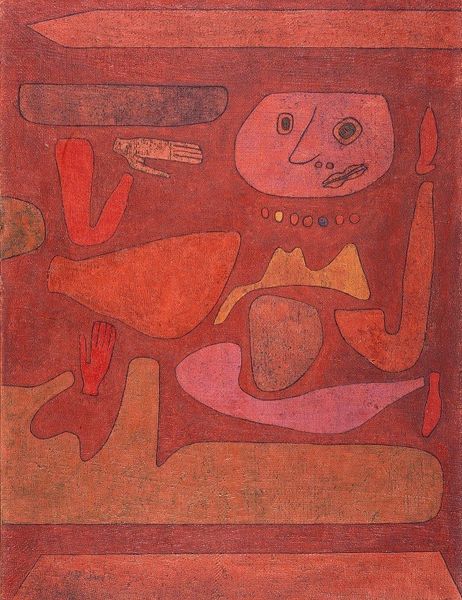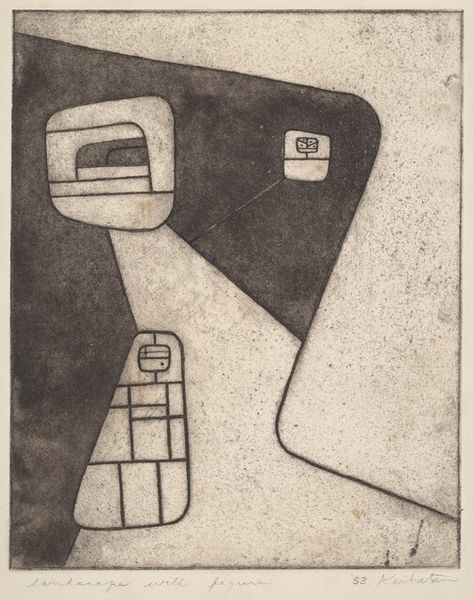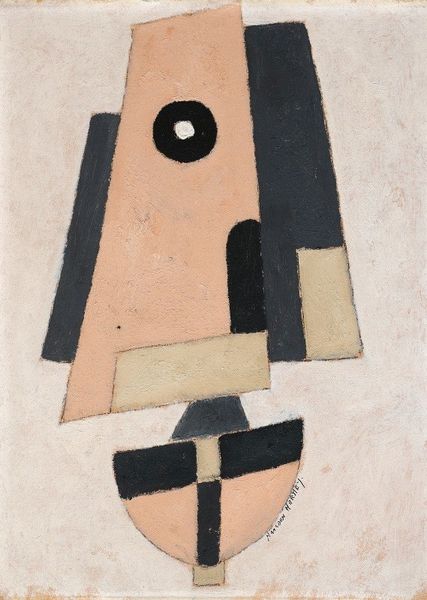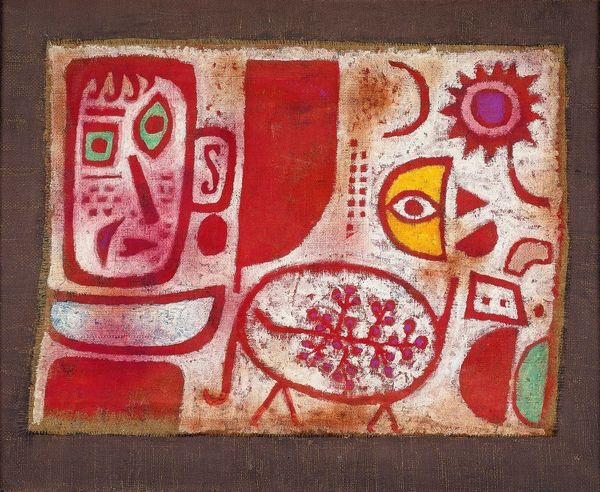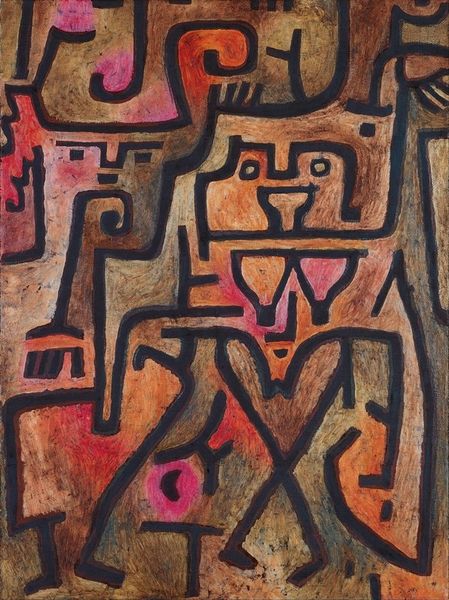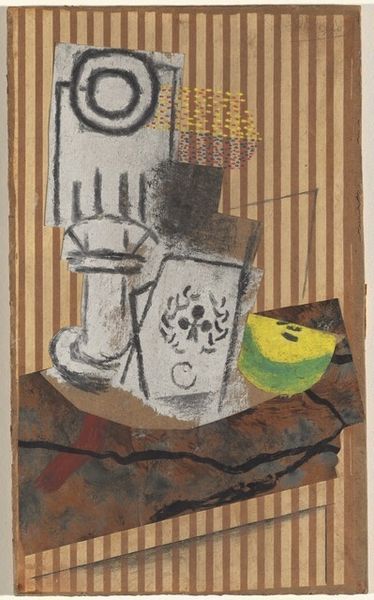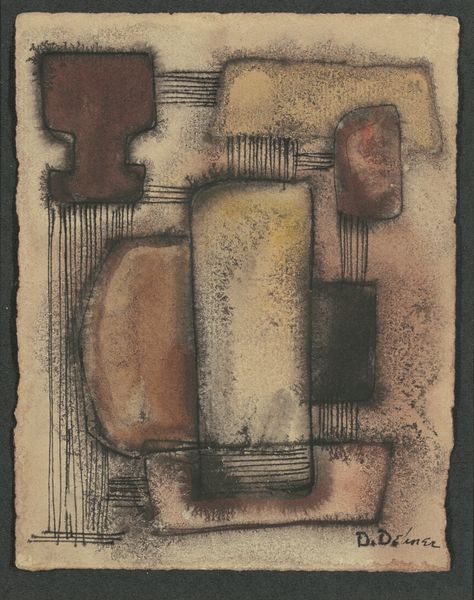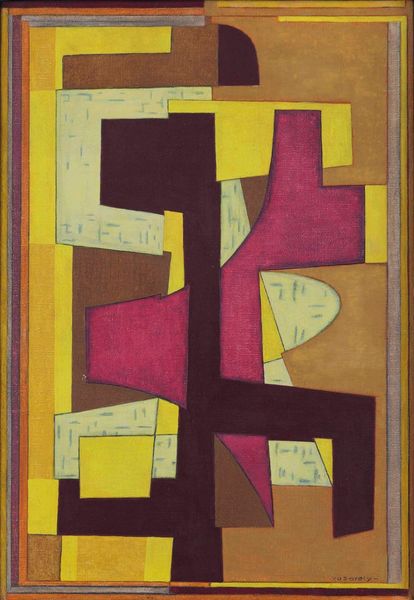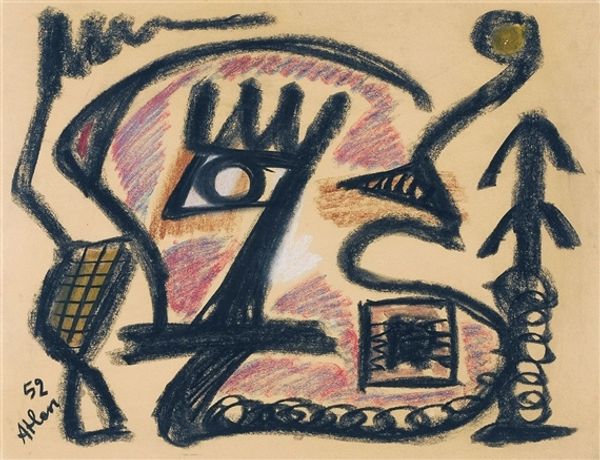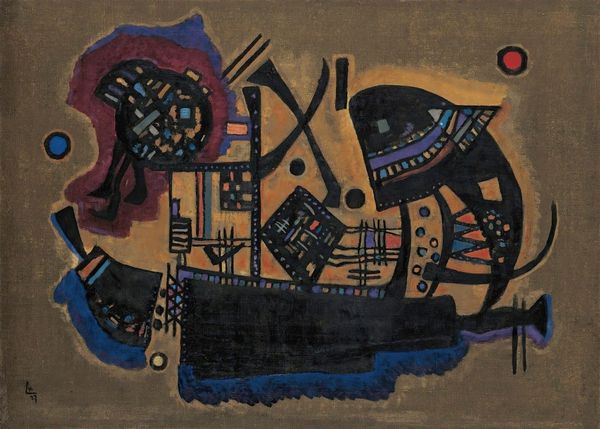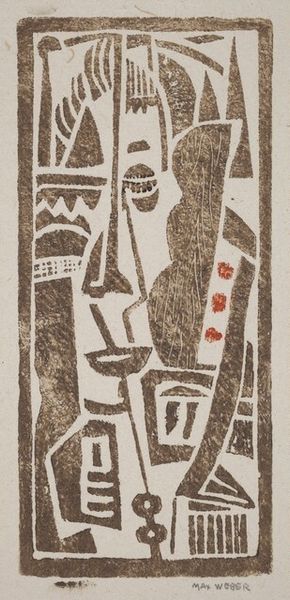
Copyright: Public domain
Editor: We are looking at Paul Klee's "WI (In Memoriam)," a watercolor from 1938. I’m immediately struck by its almost childlike simplicity, but also the solemn expression of the abstracted face. What do you see in this piece? Curator: The child-like aesthetic of Klee can't be separated from its radical context. Klee worked at the Bauhaus school of art and design. Consider this "simplicity" not as naive, but rather as the purposeful visual language developed by the avant-garde to critique established authority, like academic art. What else stands out to you about this particular work? Editor: I’m curious about the title, "In Memoriam." Does that provide a lens through which to view the imagery, especially given its creation right before the outbreak of World War II? Curator: Absolutely. Klee was labeled a "degenerate artist" by the Nazis, fired from his teaching position, and forced to flee Germany. So, the “in memoriam” can be read as an elegy, for a disappearing culture and an increasingly violent society. How does that affect your understanding of the shapes and forms? Editor: Knowing that context gives a weight to the piece I didn't perceive at first. The fragility of watercolor, combined with the simple lines, now speaks to a vulnerability and loss. Curator: Precisely! Klee's art often functioned as a form of resistance. It serves as a reminder of the importance of artistic expression as a form of social commentary, especially during times of political turmoil and oppression. The intersection of his biography and historical context enriches our understanding of the image. Editor: This makes me rethink how abstraction can be deeply political. Thanks, this has reshaped how I see Klee! Curator: My pleasure. Recognizing the cultural context that formed him helps give voice to the figures, and deepens our dialogue with them.
Comments
No comments
Be the first to comment and join the conversation on the ultimate creative platform.
